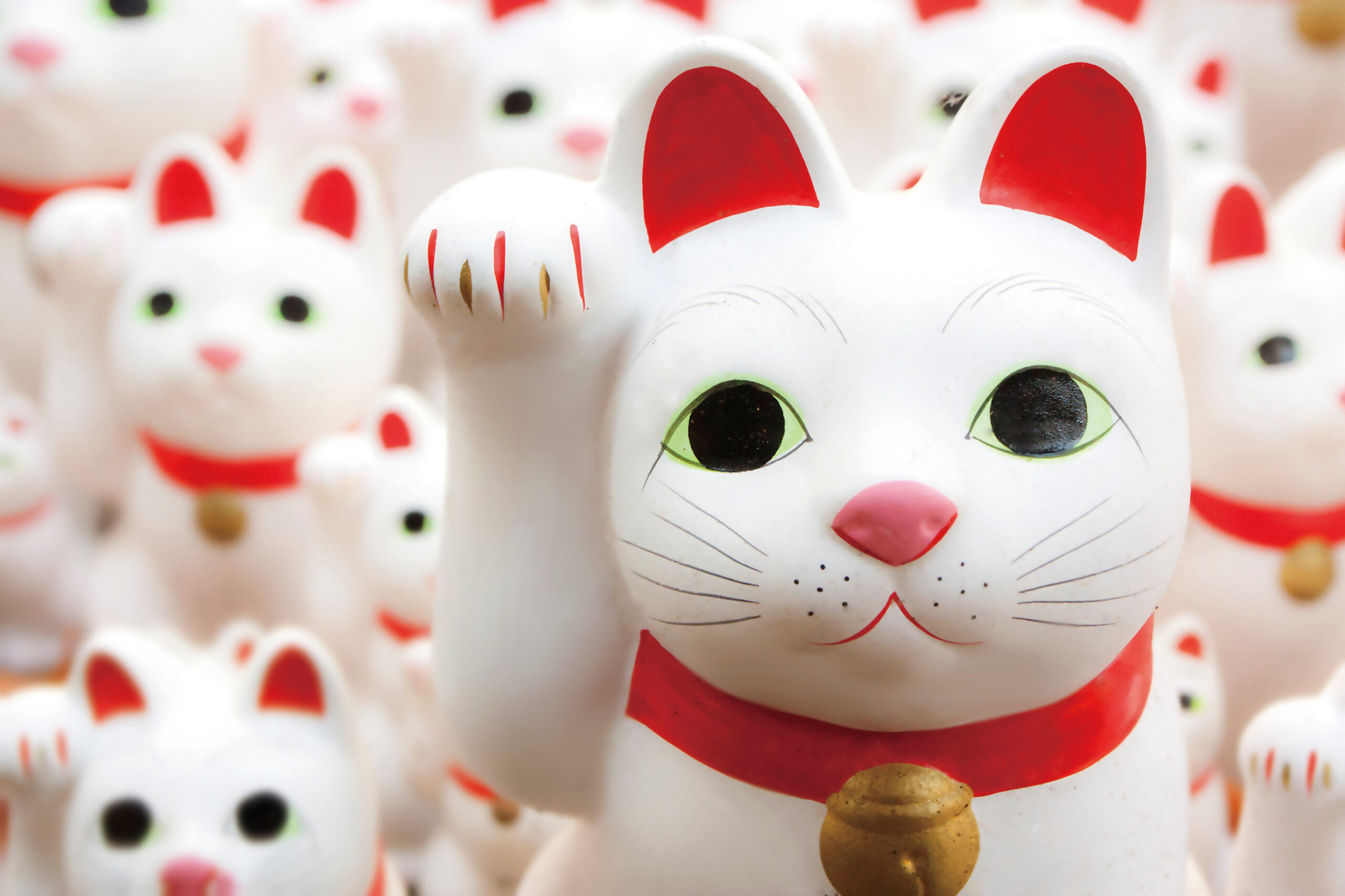We’ve all seen those adorable, waving cat figurines in shop windows and homes, but have you ever wondered about their story? Meet Maneki-Neko, the Japanese Lucky Cat, a charming figure that has captured hearts and imaginations worldwide. This little cat isn’t just a cute ornament; it carries a rich history and cultural significance that we find both fascinating and endearing.
The legend of Maneki-Neko dates back to the Edo period in Japan, around the 17th century. According to one popular tale, a poor monk lived in a small, run-down temple. Despite his dire circumstances, he cared deeply for a stray cat he had taken in. One stormy night, a wealthy samurai was passing by the temple. He took shelter under a tree near the temple gate. Standing there, he noticed the cat, which appeared to be beckoning him to enter the temple. Intrigued, the samurai followed the cat. Moments later, lightning struck the tree under which he had been standing. The grateful samurai became the temple’s patron, bringing it prosperity and renaming it Gotokuji Temple. This story has been passed down through generations, illustrating the protective and lucky nature attributed to Maneki-Neko.
Another tale involves a geisha and her beloved pet cat. One night, as she was preparing for a performance, the cat started pulling on her kimono. The owner of the house believed the cat was possessed and, in a moment of panic, cut off its head with a sword. The cat’s head flew through the air and landed on a venomous snake about to strike, saving the geisha’s life. Devastated by the loss of her pet, the geisha’s admirer created a statue in the cat’s likeness to honor its loyalty and protection, thus giving rise to the Maneki-Neko.
As we delve deeper into the history, we find that Maneki-Neko’s raised paw is more than just a wave. Each paw has a specific meaning. A cat with its left paw raised is said to attract customers and people, making it a popular choice for businesses. On the other hand, a cat with its right paw raised is believed to attract wealth and good fortune, and it is often found in homes. Some even have both paws raised, offering a double dose of luck.
The colors of Maneki-Neko also carry distinct meanings. The traditional white cat symbolizes purity and happiness, while a gold cat is associated with wealth and prosperity. A black Maneki-Neko is believed to ward off evil spirits, and a red one is thought to protect against illness. There’s even a pink Maneki-Neko, which is said to bring success in love and relationships.
Maneki-Neko figurines often hold different items in their paws, each symbolizing various forms of good fortune. For instance, a koban coin, a traditional Japanese gold coin, signifies wealth. Some cats hold a small hammer, believed to attract wealth, while others may hold a fish, symbolizing abundance and good fortune.
As we walk through modern-day Japan, Maneki-Neko’s presence is ubiquitous. From tiny keychains to large statues guarding the entrances of businesses, this lucky cat continues to be a beloved figure. We even see them in various poses and styles, from traditional ceramic figures to more contemporary designs, reflecting the ever-evolving nature of this cultural icon.
The popularity of Maneki-Neko extends far beyond Japan’s borders. We find these charming cats in Chinatowns and Asian communities worldwide, spreading their message of good fortune. In many ways, Maneki-Neko has become a global symbol of luck and prosperity, transcending cultural boundaries.
As we embrace Maneki-Neko’s charm and history, we also appreciate the deeper cultural values it represents. The tales of loyalty, protection, and fortune resonate with us, reminding us of the universal human desires for safety, success, and happiness. Whether through the legend of the samurai and the monk or the geisha and her cat, Maneki-Neko’s story is a testament to the enduring bond between humans and their animal companions.
We might place a Maneki-Neko in our homes or businesses, hoping to invite good luck and ward off misfortune. Each time we see that little cat waving, we’re reminded of its rich heritage and the stories that have shaped its journey through time. It’s a simple yet powerful symbol that connects us to a piece of cultural history, bridging the past and the present in a wave of fortune and goodwill.
So, next time we spot a Maneki-Neko, let’s take a moment to appreciate its story. It’s more than just a cute figure; it’s a beacon of hope and a reminder that, sometimes, a little luck can go a long way. Whether we’re seeking prosperity, protection, or just a touch of magic in our lives, Maneki-Neko stands ready to wave us toward a brighter future.

